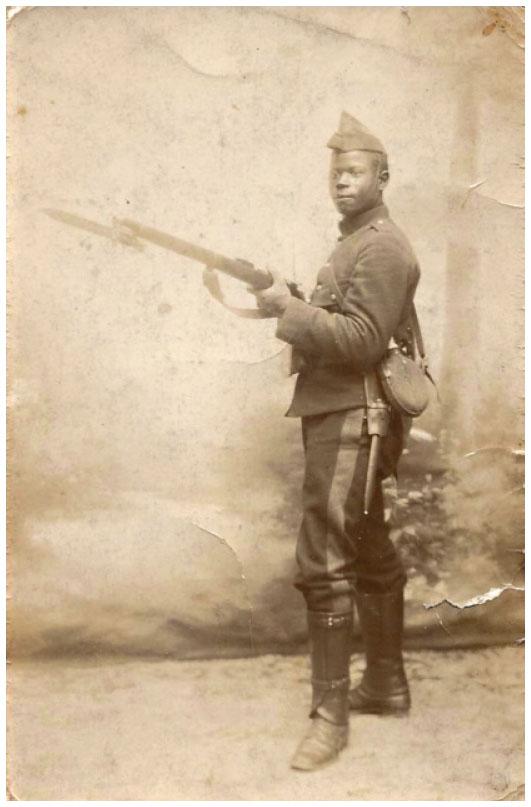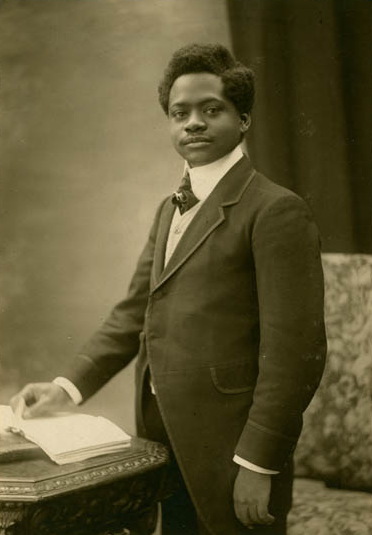For the first time, the Federal Government will commemorate the Congolese soldiers who fought for Belgium in the First World War in a special ceremony at 14:00 on Saturday.
Taking place at the monument in honour of the African campaign troops in Square François Riga in Schaerbeek, the Secretary of State for Equal Opportunities, Marie-Colline Leroy, will take part in the ceremony to mark Armistice Day on 11 November.
It is the first time a member of the Belgian Government will be present at a ceremony to pay tribute to the Congolese soldiers who fought in Africa for Belgium, organised by Bakushinta in collaboration with other associations of the Congolese community.
"The Federal Government will be present for the first time at the commemoration of the Battle of Tabora, which takes place on 11 November. The aim is to commemorate and pay tribute to the important role played by Congolese soldiers during the First World War," Leroy said.
"It is also a sign of recognition of the work carried out by the Chamber's special committee on Belgium's colonial past, which called for a federal presence at this monument," explained the Secretary of State.
Congo during the Great War
During the First World War, Congolese forces are best remembered for expelling the Germans from Rwanda and Urundi, seizing Tabora and then Mahenge six months later.

Congolese troops at the Battle of Tabora in September 1916.
These were seen as important strategic victories for Belgium against German East African Forces, and the territories would come under Belgian control after the war.
During the Great War, Belgium mobilised 300,000 men. Researchers put the death toll at 29,000, including 1,900 Congolese soldiers and thousands of porters.
Congo on the Western Front
While the majority served in Africa, a lesser-known fact is that Congolese soldiers also served on the Western Front in Europe, wrote Belgian historian and diplomat Griet Brosens in the Cahiers Bruxellois.
After seeing both Britain and France incorporate soldiers from the colonies – Sikhs, Moroccans, Senegalese and more – fighting on the Western Front for the Allied forces, Pierre Orts, the adviser to the Belgian Minister of the Colonies Jules Renkin, suggested bringing soldiers over from Congo for deployment.
The idea was dismissed as being "bad for their civilisation and the prestige of the white race in Africa." In other words, if black people saw the awful conditions in which white people were fighting the war in Europe, they would lose their "moral authority" in the Belgian Congo.
While Africans living in Belgium before the war were not allowed to be citizens, vote or officially serve in the Belgian Army, this changed on 5 August 1914, when the Congolese Volunteers Corps were established by Royal Decree.

Credit: Antoine Manglunki private collection
At least 32 Congolese soldiers were later identified by commanding officers after the war as having served in the Belgian Army in Europe during the First World War.
Left for dead
The experiences of two soldiers, Honoré Kulu and Eugène Bonkakou, in a Belgian attack during the Battle of Yser were documented by Brosens. Close to the hamlet of Tervate, Yser, the Belgian trenches were informed of a 16:00 counterattack on 22 October 1914.
Kulu was considered by Commander Von Stockhausen to be one of his best soldiers and had called him to his side before the attack. They stormed the banks of the Yser and attacked every German they came across with their bayonets.
"Bonkakou clambered over the edge of the trench and attacked. Every few metres Kulu had to duck down to avoid a volley of bullets. Following a sign from the major he sat up surprised and walked a few steps further."
Commander Von Stockhausen was killed in the attack, and when Kulu informed another officer of his death, he wasn't believed and was sent back into the firing line to seek confirmation. Bonkakou was also shot and left for dead, he would later say: "The great battle, contested with the bayonet, was a full-blown massacre."
With the victory, the Belgian Army and allies managed to hold the last corner of Belgium in 1914, ending the Race to the Sea, with the front held by the Belgian Army until 1918.
Congolese soldiers fought at every major Belgian battle except for Liège and Halen. Among the Volunteers Corps, there was also a Congolese intellectual living in Europe, Paul Panda Farnana. After becoming the first Congolese man to receive a higher education diploma in Belgium, he signed up for the Belgian Army after the outbreak of the war.

Paul Panda Farnana in 1921
After participating in the Siege of Namur, Farnan was captured by the Germans in 1914 and spent the rest of the war detained in Germany. He would later set up an association for Congolese war veterans, and took an active part in Pan-African activism as a critic of Belgian colonial practices.
After the war
After the Armistice was signed on 11 November 1918, life returned to being tough for the majority of Congolese veterans – most had lost everything while serving in the army. These men faced a larger uphill struggle than other veterans to get back on track with no recognition or support from the Belgian State.
"They had breathed in poisonous gas, been shot down or contracted chronic bronchitis in the quagmire that was Westhoek. Nobody came out of this war undamaged, physically or psychologically," writes Brosens.
Most of the veterans settled in an Ixelles district of Brussels which, 40 years later, would be rebranded as Matonge in honour of its sizeable Congolese population.

